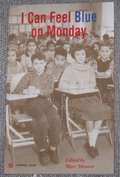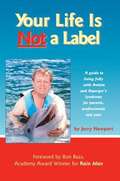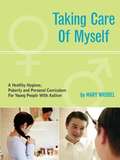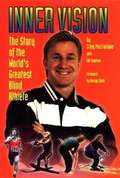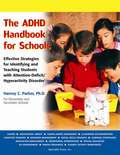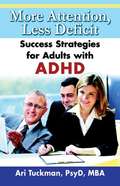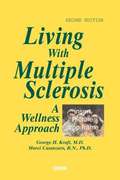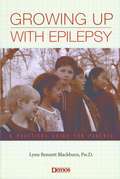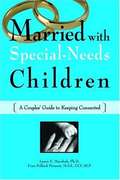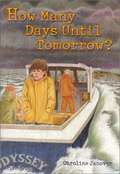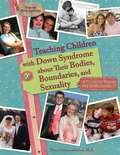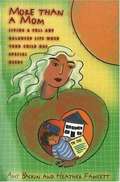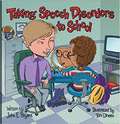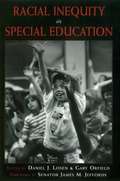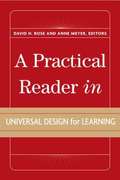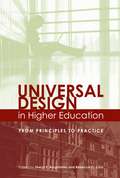- Table View
- List View
I Can Feel Blue On Monday
by Marc MaurerThe title vignette involves a teacher who is determined that a young boy (who is blind) should be able to feel the color of the piece of paper which she gives him. When he assures her that this is not possible, the teacher badgers him until he answers: "I can feel blue on Monday." He is sent to the principal's office for punishment. The principal is a wise man, and the "punishment" is quite fun. "The present volume, I Can Feel Blue on Monday, is number nineteen in the [Kernel Book] series. Here you will meet old friends and new-the real blind men and women whose stories tell what blindness is and, perhaps equally important, what it is not. Although our problems often seem complex, they frequently result from simple matters of misunderstanding and lack of information. ... How does a blind tourist absorb the splendor of the palace of the Imperial Chinese Emperor? What about the woman with failing eyesight who can no longer see the beautiful wings of a butterfly-can she no longer hope to experience those magical moments of beauty which once moved her to tears? And, finally, if (as Thomas Edison once said) 80 percent of all we learn comes through the eye, can our hope for normal lives be anything more than a futile dream?
Summit
by Marc MaurerIn this book you will meet "a blind college student worrying about meeting the challenges of his summer job as a camp counselor, a blind grandmother who wants to share storybooks with her baby granddaughter, a teen-ager fearing the loss of physical freedom she thought would necessarily accompany the loss of eyesight, and a second-grader hurt by his school teacher's obvious disdain for her blind students." Other books in this series are available from Bookshare.
The Car, The Sled, and The Butch Wax
by Marc MaurerIn this book, successful people (who happen to be blind) tell stories which illustrate coping strategies while amusing the reader. Young adults will find courage in these true sharings. Can a person who is blind really do almost anything by using alternate techniques? What are those techniques? These eight people share a few of them. When a student teacher is faced with schoolchildren who have a sledding day planned, will a white cane be enough? Can a man without sight possibly rebuild a car's engine? When a young girl tests butch wax on her long tresses, does her hair ever return to its normal state? Whose fault is it when a person who is blind opens a taxicab door onto the side of a shiny, new SUV? These experiences delight, challenge and inform. This file should make an excellent embossed braille copy.
Your Life is Not A Label
by Jerry NewportThis book describes Jerry's life and how he dealt with the challenges of Asperger syndrome. It also lets you, the reader know of things you should and shouldn't do, as well as Jerry's mistakes.
Taking Care of Myself: A Hygiene, Puberty, and Personal Curriculum for Young People with Autism
by Mary WrobelWinner of an iParenting Media Award! Puberty can be especially tough when young people have autism or other special needs. Through simple stories similar to Carol Gray's Social Stories, author Mary Wrobel teaches caregivers exactly what to say and not say, and shows how you can create helpful stories of your own. Mary addresses hygiene, modesty, body growth and development, menstruation, touching, personal safety, and more. Young students can benefit from self-care skills such as using the toilet, brushing teeth, and washing hands. Parents and teachers should begin teaching these necessary skills as early as possible, even from ages 3-5. The ultimate goal is to maximize the child's potential for independence and lifelong social success. Helpful sections include: Hygiene Health Modesty Growth and Development Menstruation Touching and Personal Safety Masturbation Using A Urinal
Inner Vision: The Story of the World's Greatest Blind Athlete
by Craig Macfarlane Gib TwymanCraig MacFarlane lost his sight at age 2 and went on to become not only the world's greatest blind athlete, but a much-sought-after motivational speaker. His message is PRIDE -- Perseverance, Respect, Individuality, Desire and Enthusiasm.
Leading the Way: The Story of Leader Dogs for the Blind
by William D. EisenbergFrom the Book jacket: In this book, William D. Eisenberg has retained the salient features of his first work, He Leadeth Me, The Leader Dog Story (published in 1982) yet expanded his discussion to show Leader Dog's growth and impact, domestically and worldwide, particularly in the last twenty years. Through the insight and experiences of Leader Dog's contemporary pioneers-staff members, graduates, Field Representatives and volunteers-Eisenberg shows how and why Leader Dogs for the Blind has become such a progressive dog guide school and will continue Leading the Way well into the 21st Century.
The ADHD Handbook for Schools: Effective Strategies for Identifying and Teaching Students with Attention-Deficit/Hyperactivity Disorder
by Harvey C. ParkerEducators in regular and special education settings who teach students with ADHD will appreciate this classroom-focused guide to ADHD that discusses specific teaching strategies and provides a thorough history of the disorder. The most up-to-date knowledge about ADHD characteristics, diagnosis, contributing factors, and medical and psychosocial treatments is comprehensively detailed. Suggested teaching techniques and tips for improving learning and behavior in the classroom include strategies for developing partnerships with parents of ADHD students, a listing of support groups and resources for parents, and specific tools for assessment, such as rating scales and history forms.
More Attention, Less Deficit: Success Strategies for Adults with ADHD
by Ari TuckmanThis essential guidebook begins by describing how the ADHD brain processes information and how that leads to typical challenges that people with ADHD experience, as well as why certain strategies are effective and others aren't. The book provides an extensive collection of practical strategies to overcome common struggles in the areas of self-esteem, work, relationships, friendships, parenting, and everyday life. It covers everything from time management to getting organized.
Attention Deficit Hyperactivity Disorder (in Adults and Children): The Latest Assessment and Treatment Strategies
by C. Keith Conners Juliet L. JettReaders can understand the Attention Deficit Hyperactivity Disorder (ADD/ADHD), learn how it is diagnosed, and find out the most effective treatment strategies.
Living with Multiple Sclerosis: A Wellness Approach
by Marci Catanzaro George H. KraftThis brand-new second edition incorporates many of the most recent developments in MS management and adds new material that reflects the explosion of new management strategies for MS and its new status as a treatable disease, and new concepts of "wellness" that are of general application as well as useful in managing chronic disease. With a broad base of topics, this guide systematically shows you how to live optimally with this neurologic disease. It offers advice on how to take control of your life in order to maximize your health. The book not only addresses the diverse choices for wellness, but also pinpoints the ramifications of various behaviors and activities. You'll find answers to the most commonly asked questions about living with multiple sclerosis, including causes and course symptom management wellness management emotional health disease treatments alternative therapies and social aspects. The authors suggest some avenues for optimizing your health through exercise, nutrition, and stress management. This excellent resource provides all of the guidelines you need to start developing your own individualized wellness program.
Growing up with Epilepsy: A Practical Guide For Parents
by Lynn Bennett BlackburnBlackburn, a pediatric neuropsychologist at St. Louis Children's Hospital, shows parents how to support social development, advocate for a child with epilepsy in the educational system, and provide effective discipline. Early chapters present essential information on understanding epilepsy, behavior management, and school programming. The rest of the book concentrates on developmental stages as they are affected by the effects of epilepsy on social development.
Dusk Outside The Braille Press
by Paul HostovskyFrom the book: Dusk Outside the Braille Press The lights go on in all the windows but one. It's the one in the northeast corner of the narrow three-story building at 88 St. Stephen Street where the proofreading department misses another sunset. Some of the white canes lean against the wall like backslashes in the unpunctuated dark, and some lie folded underneath the chairs like bundles of long chalk, a red one in each, and the fingers are passing over the dots like wind over buildings, and the braille dictionary in seventy-two volumes is stacked practically to the ceiling like a cord of wood. It steams in the darker darkness of a corner and a book louse is journeying imperceptibly through the D's. A proofreader stops reading, opens her watch and closes it click, reaches under her chair for her cane and opens it chick-a-chick into a white line which she sweeps across an invisible line which she walks straight to the hulking dictionary to look up a word which needs hyphenating. Braille is dots in a cell, lots and lots of cells. Each cell is a three-story building at dusk, the lights on in certain windows and not others. Each book is a city where the blind look in through the windows with their fingers pressed to the panes. Outside it's beginning to snow and each snowflake is a different character in the Complete Works of Beauty which contains only one mistake that the proofreading department can find, and the faces pressed to the windows are saying beautiful. And the fingers checking the time are saying time. And the white canes are opening in a chorus of switchblades and beginning to cut their separate paths home.
Reaching and Teaching Students with Special Needs through Art
by Beverly Levett Gerber Doris M. GuayThis book has played an important role in reaching and teaching special needs students; its compiled in a simple manner to provide access to its audience. It contains practices, research, and the rationale for art in the education of students with special needs.
We'll Paint the Octopus Red
by Stephanie Stuve-BodeenAs six-year-old Emma anticipates the birth of her new baby brother or sister, she vividly imagines all of the things they can do together. Emma feels ready to be a big sister! Then when the baby is born, her dad tells her that it's a boy and he has something called Down syndrome. Finally she asks, "If Isaac has this Down thing, then what can't he do?". Her dad thinks about it, then tells her that as long as they are patient with him, and help him when he needs it, there probably isn't anything Isaac can't do. In this touching story, Emma helps her father as much as he helps her to realise that Isaac is the baby they dreamed of. The book concludes with a set of commonly asked questions about Down syndrome with answers for children and how it might affect their sibling and family. For ages 3-7.
Married with Special-Needs Children: A Couples' Guide to Keeping Connected
by Laura E. Marshak Fran P. PrezantMarried with Special-Needs Children is the first book for parents to examine the stress that is often placed upon a marriage when a couple has a child with a disability. Many parents worry that even strong marriages can buckle--and some may break--under the intense demands of raising a child with special needs. In this practical, supportive guide, the authors draw on their combined professional experience in marital counseling and parent training, and feedback from hundreds of parents of children with disabilities who share their solutions and secrets for a healthy relationship.
How Many Days Until Tomorrow?
by Caroline JanoverBack Cover: "Josh is a twelve-year-old with dyslexia who spends the summer with his older brother and grandparents on a remote island in Maine. Rugged island life is torture at first, and his grandfather (alias Grumps) rarely says a kind word. But when Josh discovers the 'cool' Maine sea animals, and meets a cute girl, he forgets about running away. Living on Seal Island is adventurous and demands ingenuity Josh didn't know he had. Josh may not be bookish like his brother Simon, but he has other talents--and ones that help him lead the rescue in a life-threatening emergency." At the end of his time on the island, Josh, his brother and his grandparents have learned valuable lessons about themselves and others. Sequel to Josh: A Boy with Dyslexia.
Teaching Children with Down Syndrome about Their Bodies, Boundaries, and Sexuality: A Guide for Parents and Professionals
by Terri CouwenhovenParents of children with Down syndrome and other intellectual disabilties are accustomed to paying close attention to their child's physical, cognitive, and emotional development. This proactive approach should also include their child's sexual development, which for many parents may not seem as obvious or urgent, especially to those with young children. Drawing on her unique background as both a sexual educator and mother of a child with Down syndrome, the author blends factual information and practical ideas for teaching children with Down syndrome about their bodies, puberty, and sexuality. This book gives parents the confidence to speak comfortably about these sometimes difficult subjects. In an easy-to-read, non-clinical style, the book covers relevant issues and concerns for children of all ages, such as: labelling & explaining private body parts; Identifying & expressing emotions; Respecting personal space; Teaching self-care & hygiene; Understanding norms of privacy; Understanding gender identity; Showing appropriate levels of affection. It also covers issues that affect teenagers and young adults, including: Anticipating and understanding puberty; Dealing with periods, bras; Experiencing erections, wet dreams; Relating to the opposite sex; Sharing parental values about sexuality; Explaining sexual relationships; Preventing sexual abuse; Understanding how Down syndrome affects puberty & fertility rates. Each chapter highlights important points with key messages, teaching activities, parental pauses, and anecdotes, all of which prompt readers to stop and consider concepts or values associated with a particular topic. The final chapter covers the special concerns of parents who are now teaching teenaged or adult children about sexuality for the first time. It concludes with extensive appendices containing invaluable teaching materials and illustrations of body parts and functions.
More Than a Mom: Living a Full and Balanced Life When Your Child Has Special Needs
by Amy Baskin Heather FawcettSolid, practical advice on how to cope with the many personal challenges mothers of children with disabilities face at home, at work, and within themselves. A "how to" guide for living a balanced, fulfilling life with advice from moms who have been there -- this includes the authors' experiences and insights, and tips from dozens of other moms of kids with special needs who filled out the authors' questionnaire. Jam-packed with useful steps you can take to make your life more manageable, and ultimately more fulfilling. The book addresses 2 main concerns: Taking Care of Yourself (at home physically, emotionally, practically, spiritually/psychically); Taking Care of Business. Target Audience: Mothers of children with developmental disabilities (e.g., Down syndrome, autism, cerebral palsy, etc.) or chronic health concerns.
Journey Out of Silence
by Dora Tingelstad WeberThe author encourages those who are not hearing-impaired to increase their sensitivity to those who are.
Rehabilitation Teaching For Persons Experiencing Vision Loss
by Wilma Inkster Linda Newman Diane Storm-Weiss Anne YeadonThis textbook intended for Rehab. Professionals outlines in sequential steps and objectives tasks of daily living and Independent completion of tasks from cooking and kitchen safety, to clothing care, to applying cosmetics.
Taking Speech Disorders to School (Special Kids in School)
by John E. Bryant Tom Dineen Karen SchaderThis beautifully illustrated and fun-to-read storybook simplifies and normalizes a complicated childhood condition. When read aloud, other children can identify why a peer may be treated differently and begin to empathize with them. In addition, children whose conditions set them apart as being different begin to feel accepted and safe.
Racial Inequity in Special Education
by Daniel J. Losen Gary OrfieldAn illuminating account of a widespread problem that has received little attention, Racial Inequity in Education sets the stage for a more fruitful discussion about special education and racial justice.
A Practical Reader in Universal Design for Learning
by David H. Rose Anne MeyerUniversal Design for Learning (UDL) stands at the forefront of contemporary efforts to create universal access to educational curricula for all students, including those with disabilities. The universal in UDL does not mean there is a single optimal solution for everyone.
Universal Design in Higher Education: From Principles to Practice
by Rebecca Cory Sheryl BurgstahlerUniversal design (UD) has a rich history in applications to commercial products and architecture and is now being applied to instruction and student services. UD holds promise for making educational products and environments more inclusive of all students, faculty, staff, and visitors. This chapter is an overview of topics covered in this book, including the definition and principles of UD, the process of UD, and applications of UD in higher education (UDHE).
